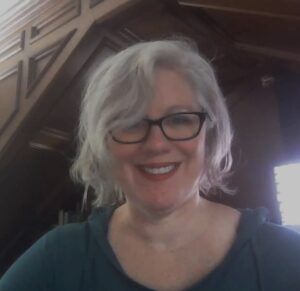Many of us feel challenged when trying to add humor to a darker memoir piece. Perhaps we don’t think of ourselves as funny, we don’t want to cheapen the depth of a traumatic experience with a formulaic or cheap joke, or we don’t think the experience was funny. We may worry humor is so subjective that our readers won’t get our jokes or won’t find them authentic and relatable.
The hermit crab essay offers an excellent opportunity to experiment with respectful humor as a tool to help readers engage with darker topics.
In The Psychology of Humor, an Integrative Approach, Rod Martin describes a longstanding philosophy of humor:
“the perception of incongruity is the crucial determinant of whether or not something is humorous: things that are funny are surprising, peculiar, unusual or different from what we normally expect.”
Martin goes on to argue that the greater the degree of incongruity, the more tension builds, and the greater the emotional release through humor.
By this definition, one can argue the hermit crab essay is inherently humorous. It purposely delivers content inside of an incongruous structure, just as hermit crabs must adopt external shells to protect their soft bodies. The contrast between form and content offers an opportunity for overt humor that in no way conflicts with the intensity of the subject matter.
Brenda Miller’s “We Regret to Inform You” is one of the better-known hermit crab essays. Inspired by publishers’ rejection letters, Miller writes a series of speculative letters for non-writing-related rejections throughout her life, beginning with “Dear Young Artist: Thank you for your attempt to draw a tree. We appreciate your efforts … but your smudges look nothing like a tree.” The essay then offers letters for teenage rejections: school dances, dance team, trying to act. Then it turns to deeper rejections: miscarriage, boyfriends, the role of stepmother. This last one shows a characteristic of the form, which, while humorous, allows for a deeper exploration of the reasons behind the rejections. Miller writes the following as one of the reasons why her application for stepmother was rejected:
“Though you have sacrificed your time and energy to support this family, it’s become clear that your desire to be a stepmother comes from some deep-seated wound in yourself, a wound you are trying to heal. We have enough to deal with — an absent mother, a frazzled father. We don’t need your traumas in the mix.”
This form allows Miller to use the children’s voice to tell us, in a few words, the real reason why the marriage doesn’t work. Including this heavily emotional description inside such a cold, rejection-letter format creates an incongruity that is humorous, insightful, and sad at the same time. If we laugh, we laugh in empathy with the narrator’s pain. Miller ends the series of rejections with one acceptance, titled “Dear New Dog Owner,” which provides not just contrast with the rejections but also a somewhat universal panacea for rejection: a dog. The incongruity of form allows a succinct exploration of larger rejection, including a full range of light and dark, funny and sad, all in the same essay.
Effective use of the hermit crab structure doesn’t have to be limited to standalone essays. In Pat Boone Fan Club, Sue Silverman uses the hermit crab form in one subsection of a larger essay about her high school rival’s suicide, while other sections have more conventional narrative structures. This section, titled “The Love Triangle as a Problem of High School Geometry,” is almost self-explanatory. Silverman uses the set, logical structure of math to try to explain the free-form rule-breaking challenge of a love triangle. The narrator’s difficulty with math serves as a metaphor for the difficulty of navigating the complex calculus of teenage love:
“But suppose this geometric proof of love is merely a postulate? For if Christopher smiles at Lynn then _______. I don’t want to fill in the blank. Memorize the following equation as if it’s hard evidence: Lynn hates me as much as I hate her. This hate = the amount we both love Christopher.”
The mathematical structure contrasts with the emotional complexities of human — particularly teenage — romance. It offers a sense of the sweet innocence of the teenage mind wrestling with the relatively new world of romance, along with the older writer’s understanding that this will never fit into a simple mathematical equation. This structure allows humor, sweetness, and empathy to exist in the same moment. Its placement immediately after the subsection introducing the rival’s suicide provides a welcome variety of emotional pacing. The few paragraphs of humorous description effectively support the intensity of the longer essay.
Many other authors use hermit crab techniques as humorous moments inside larger works. Jenny Lawson uses a one-sided conversation with her husband on Post-it notes and imaginary author talks to give alternate structures in Furiously Happy. Many authors include humorous lists in their work. There are endless options for playing with hermit crab form inside CNF. And with them, endless options for playing with contrast between form and content, title and subject matter, and even as-yet undiscovered humorous juxtapositions.
 Susan Mack is a professional writer, storyteller, LGBTQ+ advocate and coach. Her work can be found in the Rio Review, Brainchild Magazine, and Rubbertop Review. She is co-producer of Austin’s Stories on the Lawn storytelling show and is currently working on a humorous memoir entitled Three Months. She’s pursuing her MFA in creative nonfiction at the Vermont College of Fine Arts. Follow her on twitter @susanmackwrite1.
Susan Mack is a professional writer, storyteller, LGBTQ+ advocate and coach. Her work can be found in the Rio Review, Brainchild Magazine, and Rubbertop Review. She is co-producer of Austin’s Stories on the Lawn storytelling show and is currently working on a humorous memoir entitled Three Months. She’s pursuing her MFA in creative nonfiction at the Vermont College of Fine Arts. Follow her on twitter @susanmackwrite1.


